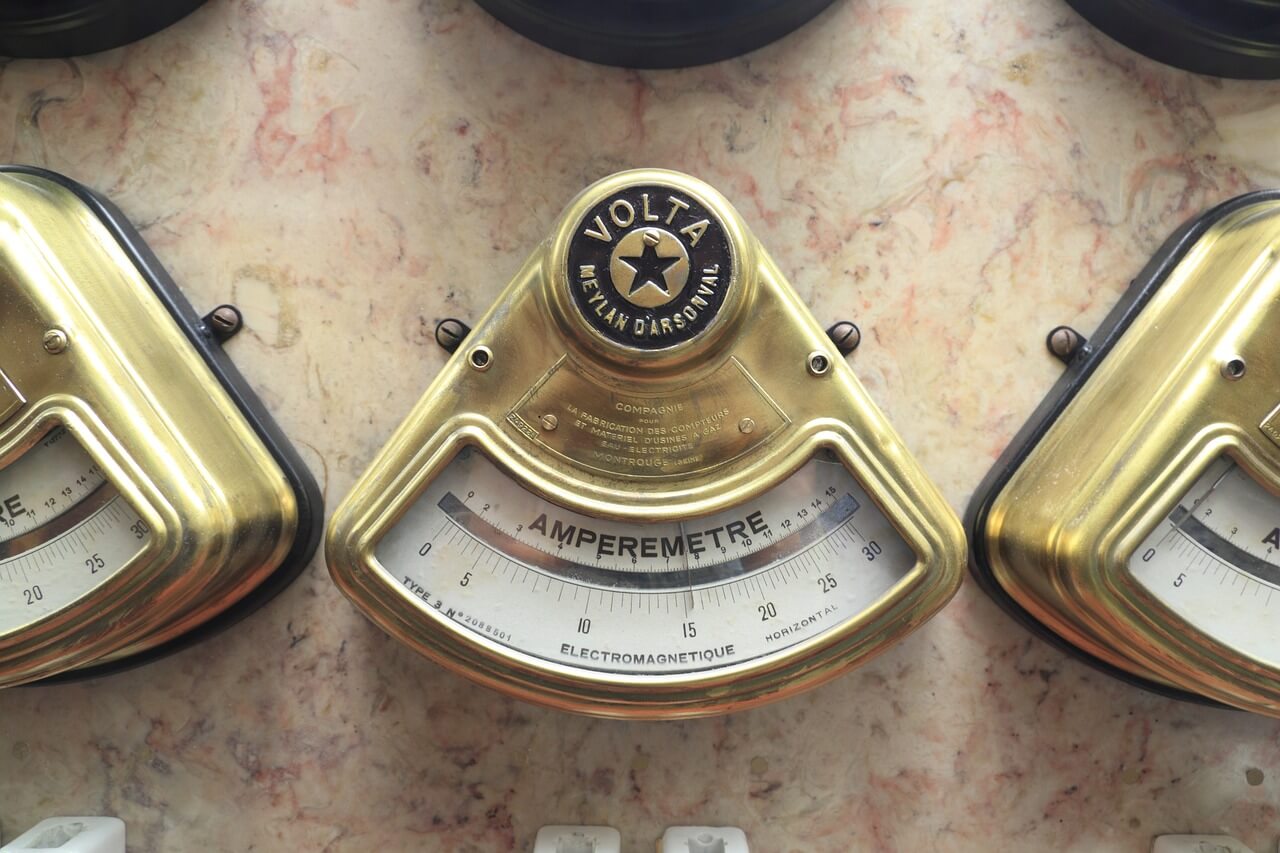What is an ammeter and what does it do? What are its history and types? What does the ammeter measure? How does it work? Information about the working principle and application areas.
An ammeter is an electrical instrument used for measuring the flow of electric current in a circuit. It is typically connected in series with the circuit, meaning that the current passes through the ammeter itself. The unit of measurement for electric current is the ampere (A), and ammeters are calibrated in amperes or milliamperes (mA). Ammeters can be analog or digital and are commonly used in electrical and electronics engineering, physics, and other fields where the measurement of electrical current is important.
History
The history of the ammeter dates back to the early 19th century, when scientists and engineers began to experiment with electricity and magnetism. The first ammeters were simple instruments that used a magnetic needle to measure the strength of a magnetic field created by an electric current. However, these instruments were not very accurate, and they could only measure small currents.
In the mid-19th century, the invention of the galvanometer revolutionized the measurement of electrical current. The galvanometer used a coil of wire suspended in a magnetic field to detect the flow of electric current. By the end of the 19th century, galvanometers had become more sophisticated and accurate, and they were widely used in scientific experiments and industrial applications.
In the early 20th century, the development of electronic amplifiers and other technologies led to the creation of more precise and reliable ammeters. Today, ammeters are used in a wide range of applications, from household appliances to complex industrial machinery. They are an essential tool for measuring and controlling the flow of electric current in modern technology.

Source: pixabay.com
How Does the Ammeter Work?
Ammeters work by measuring the flow of electric current in a circuit. They are connected in series with the circuit, meaning that the current passes through the ammeter itself. Here’s a basic explanation of how an ammeter works:
- A small amount of current flows through the ammeter: When an ammeter is connected in series with a circuit, a small amount of current flows through the ammeter.
- The ammeter measures the current flow: The ammeter measures the current flow by detecting the magnetic field created by the current. The ammeter contains a calibrated scale that indicates the current reading in amperes or milliamperes.
- The ammeter has a very low resistance: Ammeters are designed to have a very low resistance, so they do not significantly affect the current flow in the circuit. The low resistance also ensures that the ammeter does not generate excessive heat, which could damage the instrument or the circuit.
- The ammeter must be properly calibrated: To ensure accurate measurements, ammeters must be calibrated for the specific range of current being measured. This calibration ensures that the ammeter provides a precise reading, even at very low or high current levels.
- Digital ammeters work differently: Digital ammeters use electronic circuitry to measure the current flow and display the reading on a digital display. These instruments typically have a higher resistance than analog ammeters, but they are more accurate and can measure both AC and DC current.
Overall, ammeters work by measuring the flow of electric current in a circuit and providing a reading of the current level. They are essential tools for measuring and monitoring current flow in a wide range of applications, from household appliances to complex industrial machinery.
Types
There are several types of ammeters, each designed for specific applications. Here are some common types:
- Moving Coil Ammeter: This type of ammeter uses a moving coil suspended in a magnetic field to measure the flow of electric current. As the current flows through the coil, it creates a magnetic field that interacts with the field of the ammeter, causing the coil to rotate. The rotation is proportional to the current flow, and a calibrated scale on the ammeter shows the current reading.
- Digital Ammeter: A digital ammeter uses an electronic circuit to measure the current flow and display the reading on a digital display. Digital ammeters are more accurate and precise than analog ammeters, and they can measure both AC and DC current.
- Clamp-on Ammeter: This type of ammeter is designed to measure the current flow without interrupting the circuit. It uses a clamp to surround the wire carrying the current, and the magnetic field generated by the current is detected by the ammeter.
- Multimeter: A multimeter is a versatile instrument that can measure voltage, current, and resistance. It combines the functions of a voltmeter, an ammeter, and an ohmmeter in one instrument. Multimeters can be either digital or analog and are used in a wide range of applications.
- Thermal Ammeter: A thermal ammeter measures current flow by detecting the heat generated by the current passing through a resistor. The temperature rise is proportional to the current flow, and a calibrated scale on the ammeter shows the current reading.
Picoammeter
A picoammeter is a highly sensitive type of ammeter that is designed to measure very low levels of electric current, typically in the range of picoamperes (10^-12 A) to femtoamperes (10^-15 A).
Picoammeters are used in research and development applications where high precision and accuracy are required, such as in semiconductor and materials science. They are also used in the measurement of ionizing radiation and for the detection of very weak electric signals in biological systems.
Picoammeters typically use a feedback circuit to maintain a constant voltage across a high-impedance input resistor, which is connected in series with the circuit being measured. The voltage drop across the resistor is proportional to the current flow, and the picoammeter measures this voltage to determine the current reading.
Picoammeters are extremely sensitive instruments and require careful handling to avoid noise and interference from external sources. They are often housed in shielded enclosures and used in specialized laboratory settings.

Source: pixabay.com
Application
Ammeters are widely used in a variety of applications where measuring electric current is necessary. Here are some common applications of ammeters:
- Electrical power systems: Ammeters are used in electrical power systems to measure the flow of current in various parts of the system, including the generator, transformer, transmission lines, and distribution lines.
- Electronic devices: Ammeters are used in electronic devices, such as computers, cell phones, and other electronic equipment, to measure the current flow through different components.
- Automotive industry: Ammeters are used in automotive systems, such as the battery, alternator, and starter motor, to measure the current flow and ensure that these systems are operating correctly.
- Industrial processes: Ammeters are used in a wide range of industrial processes, such as welding, electroplating, and electrochemical processes, to measure the current flow and control the process.
- Research and development: Ammeters are used in scientific research and development to measure current flow in various applications, such as semiconductor materials, biological systems, and medical devices.
- Energy management: Ammeters are used in energy management systems to monitor the current flow and energy consumption in buildings, factories, and other facilities, and to optimize energy usage and reduce costs.
Overall, ammeters are an essential tool for measuring and monitoring electric current in a wide range of applications, and they play a critical role in ensuring the safe and efficient operation of electrical and electronic systems.